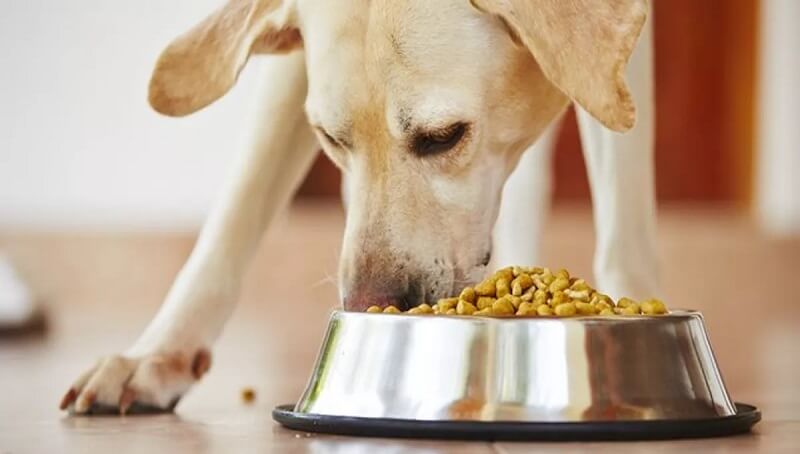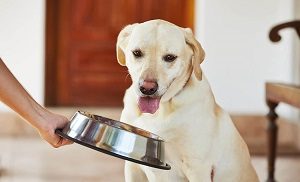
10 Calm Small Dog Breeds
May 30, 2022
Taking Care of a Hairless Pet Rat
May 31, 2022
For people, things are pretty simple. Usually, we would have breakfast between 6 and 8 in the morning, lunch will be anywhere between 11 and 1, while dinner is around 7 – 8 in the evening. Between meals, we would usually get a snack or two. Things are a little more complicated for people working the night shift, who might have dinner later on, closer to 12 midnight. But what about hour pet dogs, will they follow our eating schedule, or will have one of their own? This is a very common question I get especially from new pet owners. Most people assume that their dogs will eat when they do, but what do the vets say? What will be the best time to feed a dog?
Common Practices Involving Dog Feeding Schedules
Although this question might seem like an easy one to answer, a simple internet browsing will give you a lot of different answers. Truth be told, there isn’t a straightforward right and wrong answer. This is why I will go over some of the best practices when it comes to the schedule for feeding a dog.
Feeding your dog twice a day
Based on this recommendation, you should try to feed your dog first thing in the morning, around 7 am, and early in the evening, close to 6 pm. This is mostly because your dog’s digestive system and general anatomy will require between 4 and 6 hours to fully digest and absorb the food you’re giving it. It will take around 8 to 10 hours for the dog’s stomach receptors to start sending signals of hunger to the brain. This is why you will hear a lot of dog experts and vets talk about feeding an adult dog two times per day, with windows of 8 to 12 hours between meals.
You might also like my articles on whether dogs can drink Gatorade, ocean water, or cow’s milk.
If you’re used to waking up in the morning and preparing for work, then this will be easy. It will only mean adding another task to your schedule, feeding your dog before you leave. Keep in mind that most dogs will want to go to the bathroom minutes after they eat, which means that you will also have to add a walk to the morning routine so that the dog can defecate. As soon as you’re done feeding and walking your pet, you can continue with your daily activities.
The schedule will continue in the same way: As soon as you get home in the evening, you should first feed your pet, then take it for the needed walk, and only after this will you be able to go about your normal business. After the walk, the dog will usually want to relax and rest, so you’ll have time for any other activities.
Keep in mind that this is only recommended for adult, healthy dogs. A puppy, on the other hand, will require feeding at least 4 times per day, as twice a day won’t be enough to get all the needed nutrients. The feeding schedule will also vary if you have a very active or a senior dog.
Feeding dogs once a day
 There are some people that will tell you that feeding your dog once a day will be enough, especially if you give it a big meal in the evening. This is for people that have a healthy adult dog and don’t have enough time for two feedings and two walks. Giving your dog enough food in the evening will give it enough nutrients to get over the night and get by until the next evening. The dog will have to be walked, although the perfect time for the walk will be based on the dog’s preferences and the owner’s available time.
There are some people that will tell you that feeding your dog once a day will be enough, especially if you give it a big meal in the evening. This is for people that have a healthy adult dog and don’t have enough time for two feedings and two walks. Giving your dog enough food in the evening will give it enough nutrients to get over the night and get by until the next evening. The dog will have to be walked, although the perfect time for the walk will be based on the dog’s preferences and the owner’s available time.
Let the dog decide
There are a few dog owners that consider that the dog will be the only one that should decide when it wants to eat. In this instance, the dog will have enough food in the food bowl and the owner will go about their business, only filling the bowl again at need. This technique will keep your dog full at all times and will be great for both nursing dams and hyperactive dogs that need a lot of calories, but it might come with some issues. This feeding method will be especially bad for dogs with diabetes and pets that don’t know when to stop eating. It will also expose the food to all kinds of creatures like rodents, cockroaches, and ants that might infest your house.
Feeding Schedules Across the Dog’s Lifespan
Although there isn’t a clear, straightforward answer as to the perfect time to feed a dog, there are some recommendations you can follow, and some of them will refer to the feeding schedule based on the age of the dog.
- Puppies: Usually, you should do your best to feed a pup at least 3 times a day, but you will also be prepared to add housetraining needs to your schedule. A typical schedule will be something like this: elimination-feeding-elimination. This means that you will usually have to add a walk to the schedule even before the first feeding, really early in the morning. After the pup has had breakfast, give it a 30-minute rest time and then walk it again. You will follow this with the lunch meal, which should be followed by another walk that should be around 4 pm, and then dinner at around 6 pm. You should then add another walk outside just before preparing the dog for bed.
- Highly active dogs: Some more active breeds of dogs like a Viszla or a Terrier, or even working breeds like Border Collies, might require three or more meals per day and should follow the puppies’ recommended schedule for eating and walking. These are just some of the breeds that will process their food a lot faster, due to their very high metabolic rates. This is why you will also have to feed them more frequently.
- Sedentary dogs: You shouldn’t feed a dog that likes to sleep all day more than once daily. Mastiffs and Great Danes, for example, are some of the breeds that have very sedentary lives.
- For senior dogs: As you’d expect, as your dog gets older, it will be less and less active, which means it will also need less food to replenish its nutrients. Senior dogs should either be fed once per day or they should receive two meals daily but in smaller quantities. Depending on its health and general wellbeing, you should talk to your vet about the perfect eating schedule.
Conclusion
Feeding your dog will usually come down to your dog’s individual type, temperament, breed, and preferences, as well as your available time throughout the day. There isn’t a clear rule you will have to follow and in time, you will understand your dog’s needs.
